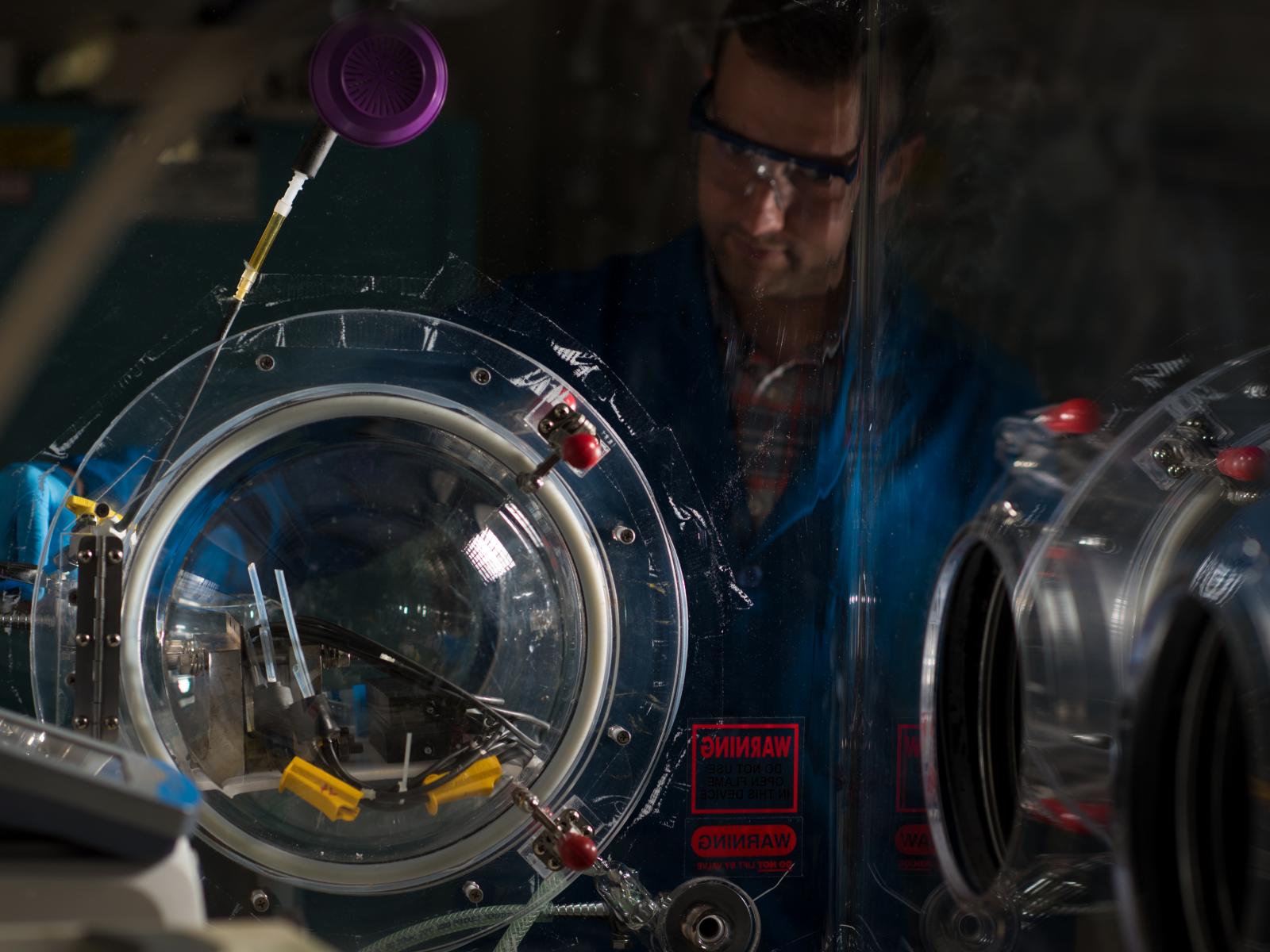Redox Flow Battery Laboratories

An organic molecule used in dyes and antibiotics may be the key to less expensive, more efficient redox flow batteries. Scientists at the Department of Energy’s Pacific Northwest National Laboratory (PNNL) developed a highly reversible, water soluble material based on phenazine. The compound could serve as an alternative to vanadium, which is used in grid-scale batteries to store electricity.
Andrea Starr | Pacific Northwest National Laboratory
To explore ways to increase the use of wind, solar, and other renewable energy sources across the electric grid, PNNL has a series of laboratories dedicated to researching, testing redox, and scaling up flow batteries—a new battery type that can be easily scaled up to megawatt levels for grid applications.
Each of these labs supports a different phase of research for these power grid-enhancing batteries, beginning with fundamental research and ending with testing large-scale battery stacks. These labs include:
-
Redox Flow Battery Developmental Laboratory: Dedicated to the rapid discovery and synthesis of redox molecules and materials for energy storage.
-
Redox Flow Battery Assembly Laboratory: Dedicated to the design, fabrication and integration of redox battery cells and stacks.
-
Redox Flow Battery Large-scale Lifetime Testing Laboratory: Dedicated to the testing, diagnosis, and validation of the performance and the redox materials and batteries from laboratory cells to over kilowatt modules under real grid application conditions.
Redox flow batteries help create a more stable grid because of their ability to store large amounts of energy from intermittent renewable sources like the wind or sun. This makes research into and development of more efficient and inexpensive redox flow batteries critical to grid modernization.
PNNL’s redox flow battery laboratories offer several stations ranging from single-cell to multistack testing, along with numerous in-situ and ex-situ tools for chemical, thermal, mechanical, and electrical evaluation. These tests are conducted under grid use conditions with controlled chemical and electrochemical environments that mimic the dynamic charge-discharge conditions required for a wide range of grid scenarios such as cold start, ramping, frequency regulation, peak shaving, etc. Standard testing and validation protocols are developed to validate not only technologies developed by PNNL, but also materials and technologies developed by other research groups and by industry.